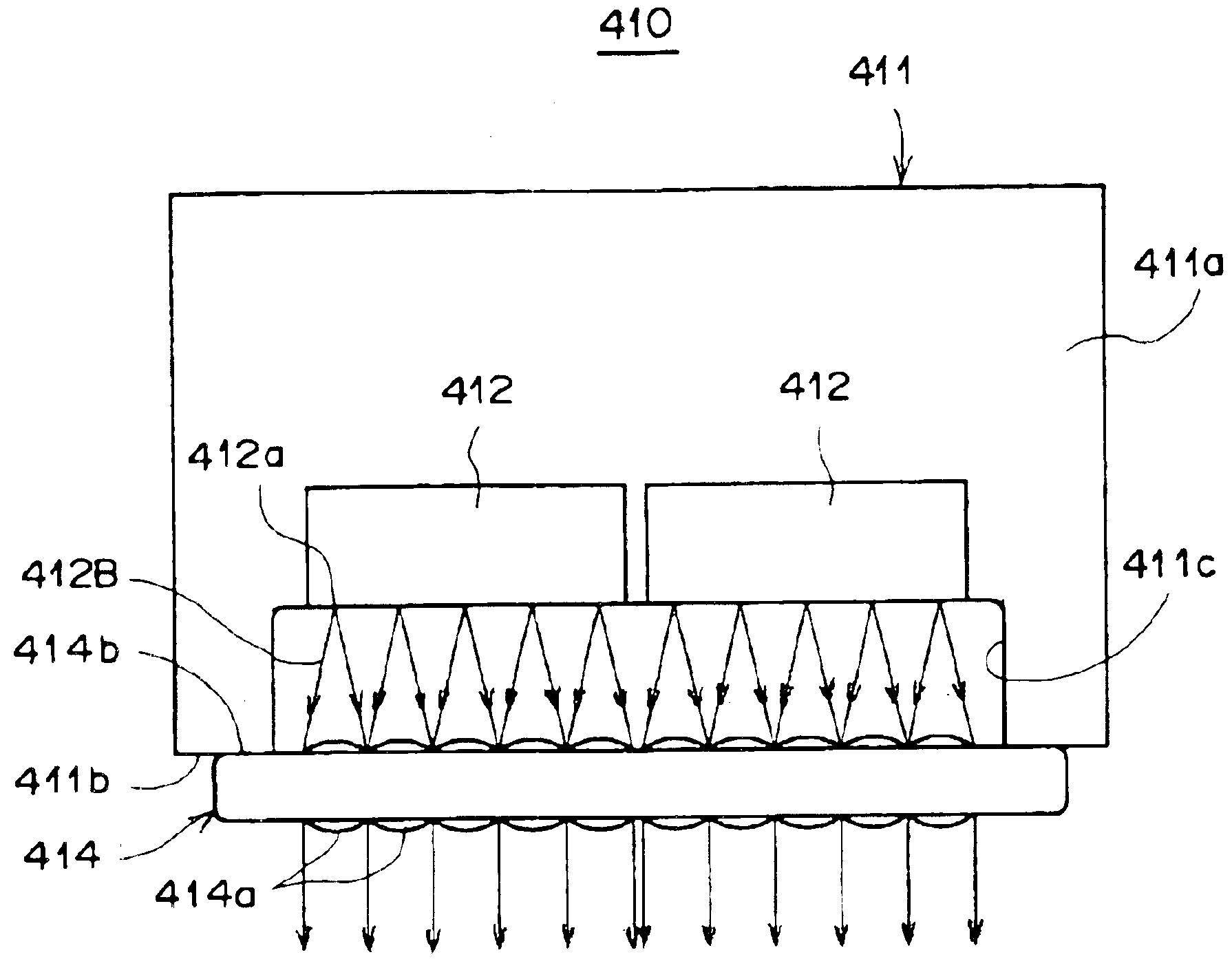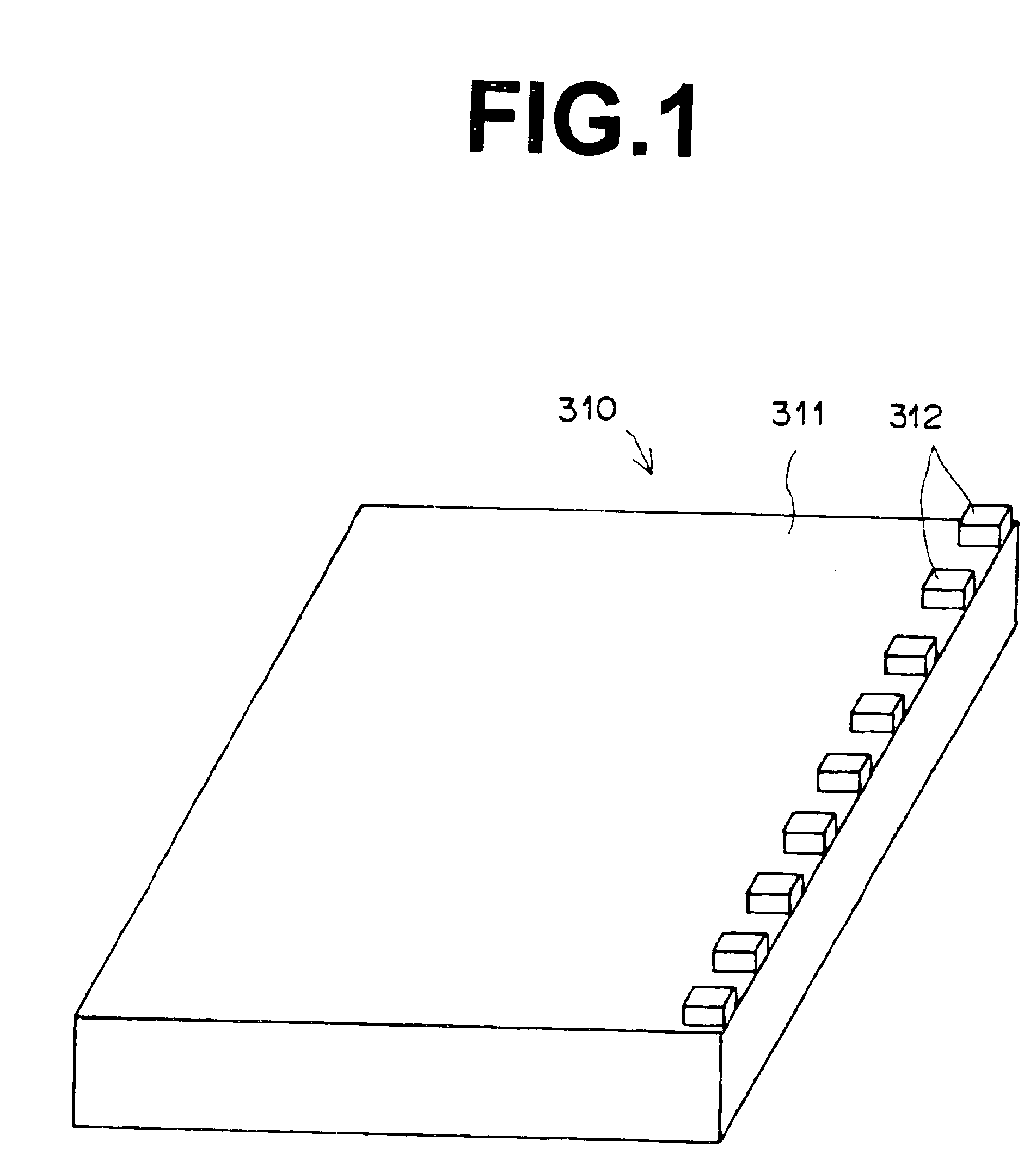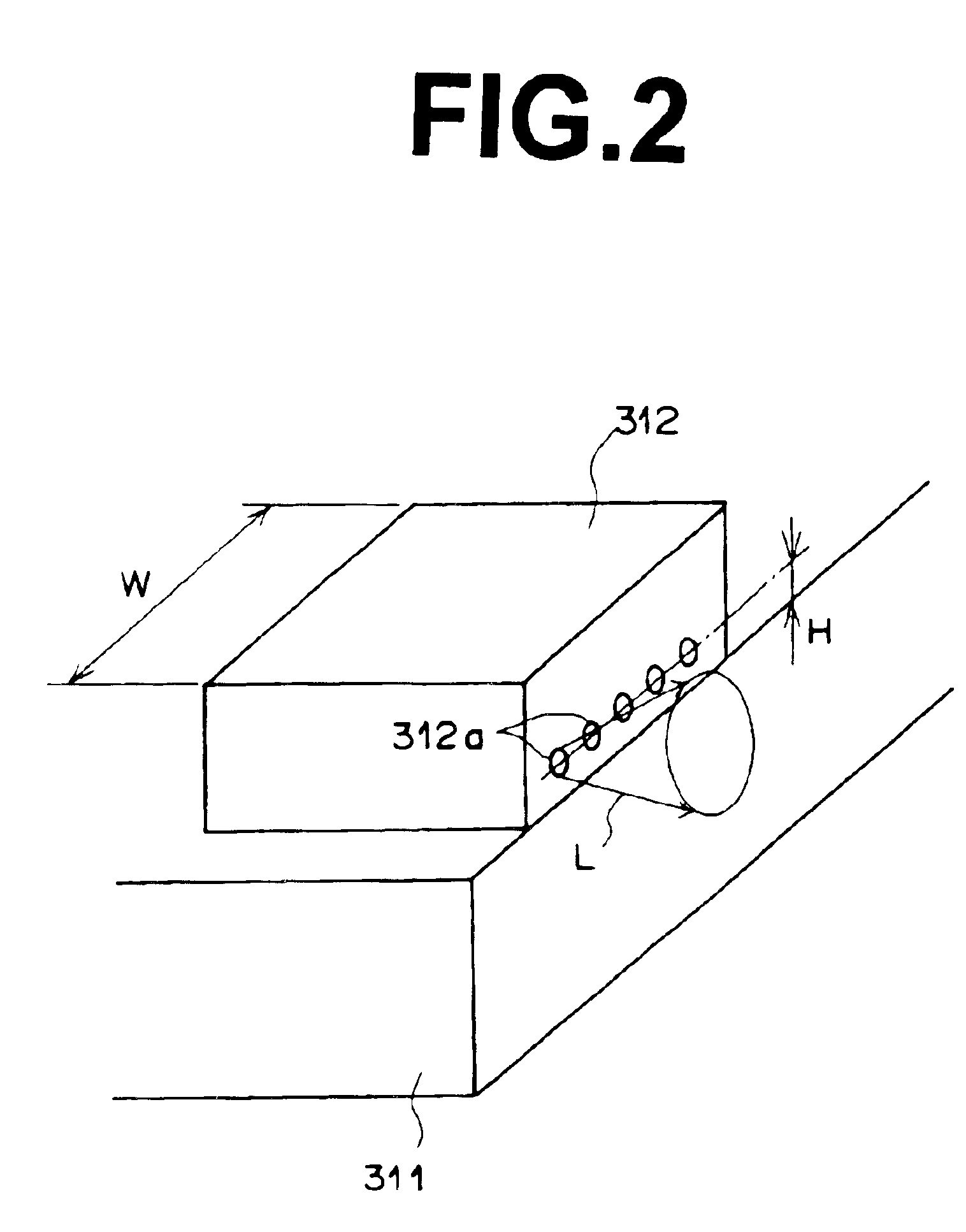Laser diode array, laser device, wave-coupling laser source, and exposure device
a laser array and laser technology, applied in semiconductor lasers, instruments, optical elements, etc., can solve the problems of increasing manufacturing cost and maintenance cost, poor wavelength-conversion efficiency, and difficult to obtain high output power of wavelength conversion lasers in which infrared light is converted to its third harmonic, etc., to achieve fine image, sufficient focal depth, and sharp image
- Summary
- Abstract
- Description
- Claims
- Application Information
AI Technical Summary
Benefits of technology
Problems solved by technology
Method used
Image
Examples
second embodiment
[0163]The laser device 410′ of this embodiment basically differs from that of the second embodiment shown in FIGS. 11 to 13 in that four multi-cavity laser diode chips 412 are arranged in two rows and two columns. That is, a second heat block 411′ the same as the heat block 411 described above is placed on the heat block 411 and fixed to the same. A pair of multi-cavity laser diode chips 412 and a collimator lens array 414 are fixed to each of the heat blocks 411 and 411′. The second heat block 411′ is substantially of the same structure as the heat block 411 and is provided with a recess 411c for preventing eclipse of the laser beams 412B. The second heat block 411′ is further provided with a recess 411d for preventing interference with the multi-cavity laser diode chips 412 fixed to the lower heat block 411.
[0164]Also in this embodiment, by moving the collimator lens array 414 up and down and left and right in a plane perpendicular to the optical axes of the lens elements 414a whi...
fifth embodiment
[0173]A wave-coupling laser source in accordance with the present invention will be described, hereinbelow. As shown in FIG. 18, the wave-coupling laser source of this embodiment comprises seven transverse multimode GaN-laser diode chips LD1, LD2, LD3, LD4, LD5, LD6 and LD7 fixed on a heat block 10 of Cu, seven collimator lens arrays 11 to 17 each for one of the seven laser diode chips LD1 to LD7, a condenser lens 20 and a multimode optical fiber 30. Each of the GaN-laser diode chips is a multi-cavity laser diode chip having a plurality of (three in this particular embodiment) light emitting points.
[0174]FIG. 18 shows the basic structure of a wave-coupling laser source in accordance with the fifth embodiment of the present invention, and the collimator lens arrays 11 to 17 and the condenser lens 20 are shown only schematically. Especially, though not clearly shown in FIG. 18, each of the collimator lens arrays 11 to 17 comprises a plurality of collimator lens elements which are the ...
sixth embodiment
[0185]A wave-coupling laser source in accordance with the present invention will be described with reference to FIG. 23, hereinbelow. In FIG. 23, elements analogous to those shown in FIG. 18 are given the same reference numerals and will not be described here unless necessary.
[0186]The wave-coupling laser source of this embodiment basically differs from that of the fifth embodiment in that a single collimator lens array 50 where collimator lens elements 50a for all the cavities of the laser diode chips LD1 to LD7 are integrated is employed in place of 7 collimator lens arrays 11 to 17.
[0187]Though the efficiency of utilization of space can be improved by closely arranging the 7 collimator lens arrays 11 to 17 of the structure described above and closely arranging the laser diode chips LD1 to LD7, the efficiency of utilization of space can be further improved by the use of the single collimator lens array 50. At the same time, when the efficiency of utilization of space is improved, ...
PUM
 Login to View More
Login to View More Abstract
Description
Claims
Application Information
 Login to View More
Login to View More - R&D
- Intellectual Property
- Life Sciences
- Materials
- Tech Scout
- Unparalleled Data Quality
- Higher Quality Content
- 60% Fewer Hallucinations
Browse by: Latest US Patents, China's latest patents, Technical Efficacy Thesaurus, Application Domain, Technology Topic, Popular Technical Reports.
© 2025 PatSnap. All rights reserved.Legal|Privacy policy|Modern Slavery Act Transparency Statement|Sitemap|About US| Contact US: help@patsnap.com



